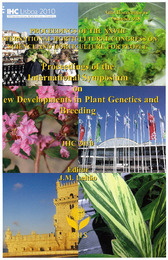Please use this identifier to cite or link to this item:
https://hdl.handle.net/11000/34828Full metadata record
| DC Field | Value | Language |
|---|---|---|
| dc.contributor.author | Rubio López, Fernando | - |
| dc.contributor.author | García Martínez, Santiago | - |
| dc.contributor.author | Alonso Sanchis, Aránzazu | - |
| dc.contributor.author | Grau Sánchez, Adrián | - |
| dc.contributor.author | Valero Roche, Manuel | - |
| dc.contributor.author | Ruiz Martínez, Juan José | - |
| dc.contributor.other | Departamentos de la UMH::Biología Aplicada | es_ES |
| dc.date.accessioned | 2025-01-17T10:09:28Z | - |
| dc.date.available | 2025-01-17T10:09:28Z | - |
| dc.date.created | 2012-06 | - |
| dc.identifier.isbn | 978 90 6605 398 4 | - |
| dc.identifier.issn | 0567-7572 | - |
| dc.identifier.uri | https://hdl.handle.net/11000/34828 | - |
| dc.description.abstract | We have developed advanced breeding lines of sorne traditional cultivars, with introgressed genetic resistances to ToMV, TSWV and TYLCV (genes Tm-2a, Sw-5 and Ty-1). In order to evaluate possible effects of the different introgressions in these local landraces, eight breeding lines of 'De la Pera' cultivar corresponding with ali the homozygote combinations for the resistance genes, were grown in an experi-mental open-field. About 10-15 plants of each line were evaluated for agronomic traits (commercial and non commercial fruit yield, number of inflorescences, number of fruits per inflorescence and mean fruit weight) and fruit quality traits (soluble solids content and titratable acidity). Three CAPS markers (To-3, Aps-F2 and CT220) linked to the resistance genes were used to confirm the genotypes of the lines. Lines homozygous for ToMV resistance gene showed higher values than ToMV susceptible lines for three yield traits, whereas susceptible lines showed higher values for soluble solids concentration and titratable acidity. Lines homozygous for the TSWV resistance gene showed a small decrease of fruit weight with respect to the susceptible lines. Significant differences between TYLCV-resistant and susceptible lines were found for eight of the nine traits. Most notably, resistant lines were less productive than susceptible lines and had lower soluble solids content and titratable acidity. These results indicate that the introgression of Tm-2a, Sw-5 and Ty-1 genes affects agronomic and quality traits, probably due to other genes introduced along with the resistance gene during backcrossing (linkage drag) | es_ES |
| dc.format | application/pdf | es_ES |
| dc.format.extent | 7 | es_ES |
| dc.language.iso | eng | es_ES |
| dc.publisher | International Society for Horticultural Science | es_ES |
| dc.relation.ispartof | Proceedings of the XXVIII International Horticultural Congress on Science and Horticulture for People. (IHC2010): III International Symposium on Plant Genetic Resources | es_ES |
| dc.relation.ispartofseries | Acta Horticulturae | es_ES |
| dc.relation.ispartofseries | 935 | es_ES |
| dc.rights | info:eu-repo/semantics/openAccess | es_ES |
| dc.rights | Attribution-NonCommercial-NoDerivatives 4.0 Internacional | * |
| dc.rights.uri | http://creativecommons.org/licenses/by-nc-nd/4.0/ | * |
| dc.subject | Tm-2a | es_ES |
| dc.subject | Sw-5 | es_ES |
| dc.subject | Ty-1 | es_ES |
| dc.subject | ToMV (Tomato mosaic virus) | es_ES |
| dc.subject | TSWV (Tomato spotted wilt virus) | es_ES |
| dc.subject | TYLCV (Tomato yellow lea/curl virus) | es_ES |
| dc.subject | CAPS markers | es_ES |
| dc.subject | Linkage drag | es_ES |
| dc.title | Introgressing resistance genes into traditional tomato cultivars: effects on yield and quality | es_ES |
| dc.type | info:eu-repo/semantics/article | es_ES |

View/Open:
AH-Introgressing resistance genes into traditional tomato cultivars.pdf
905,37 kB
Adobe PDF
Share:
.png)
